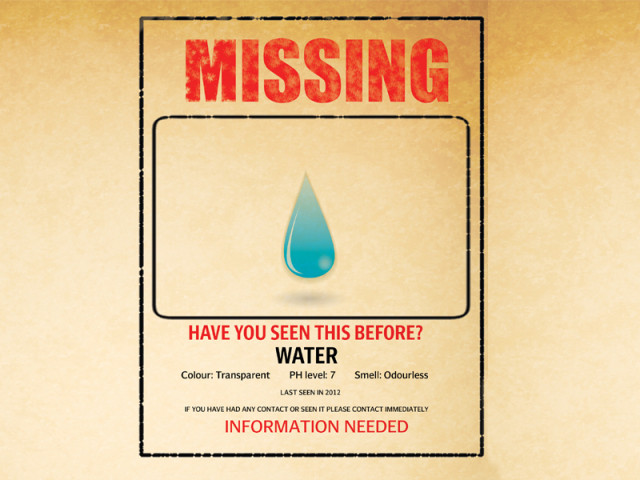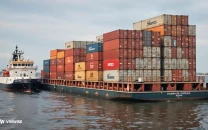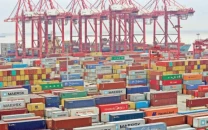Despite floods, Pakistan faces water shortfall
Deficient storage capacity a threat to crop yields.

According to a senior government official, the country usually faces 20% to 25% shortfall during the Rabi season. However, he added that less cultivatable land is available to sow wheat due to floods, which will lead to lower yields.
The meeting, on Friday, of the technical committee of the Indus River System Authority (Irsa) projected water availability and shortage for the 2013 Rabi season. The provincial representatives and officials of the Water and Power Development Authority (Wapda) also attended the meeting.
According to a senior official of Wapda, Irsa’s body observed that the total water inflows in rivers will be 20.82 million acre feet (MAF) during the upcoming Rabi season starting from October 1, 2012. The committee noted that the country has the capacity to store 10.78 MAF of water. Water losses were estimated to be 1.7 MAF while the total supply of water, during the season, was estimated to be 30 MAF against the demand of 37 MAF, a critical situation.
Out of the total supply, Punjab will receive 16 MAF, Sindh 12 MAF, Khyber-Pakhtunkhwa 0.7 MAF and Balochistan will get 1.02 MAF of water for the cultivation of Rabi crops.
The official said due to the lack of dams to store the water during recent floods; a large quantity of precious water was wasted. Tarbela Dam – the second largest dam in the world by structural volume – has reached its maximum storage capacity.
He added that the storage level of Tarbela dam is reduced from its original capacity of 9.5 MAF to 6.5 MAF because of sediment accumulation – also known as silting.
“It is not possible to restore the dam’s original water capacity as its will require enormous capital,” the official said.
Mangla Dam’s maximum storage level was enhanced to 1,242 feet after the ‘Mangla Raising Project’, he said. “However, it will be possible to fill it to the level of 1,202 feet,” he said adding that the country had a lack of storage especially on the Indus river and therefore was not able to store water despite huge supply of it due to floods. “We are receiving 45,000 cusecs of water inflows in Mangla and releasing 8,000 cusecs to store more water in the dam,” he said.
The official said that over 100,000 cusecs of water was being discharged into the sea through the Kotri barrage due to lack of storage capacity. “According to current estimates, 2MAF of water was lost to the sea due to lack of reservoirs,” the Irsa official said adding that during the recent floods, over 4MAF of water will be discharged into the sea due to the attainment of country’s maximum storage capacity.
Published in The Express Tribune, September 15th, 2012.



















COMMENTS
Comments are moderated and generally will be posted if they are on-topic and not abusive.
For more information, please see our Comments FAQ